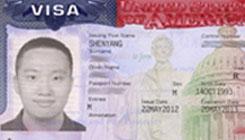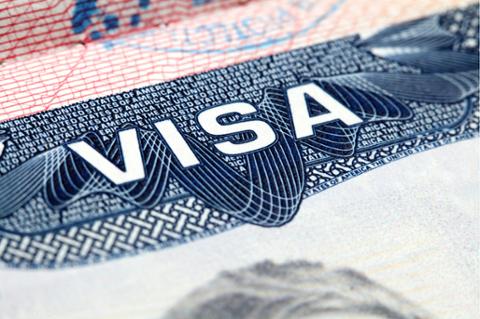Tech workers have a dog in the fight for immigration reform but their anxiety about H-1B visas may not be relieved in the short term. According to the U.S. Citizenship and Immigration Services (USCIS), the
H-1B cap for 2013 will remain unchanged.

If anything's different next year, it may be that companies hit the cap sooner. “We’re expecting the cap to be used up in April or by May at most,” says immigration attorney Sheela Murthy. She adds that may be a sign that the economy is picking up and that companies are hiring.
Complicated Law
The H-1B program touches a nerve among American tech workers. They contend employers are bringing in foreign workers to take their jobs because they can pay them less. Meanwhile, companies like
Microsoft continually call for the cap to be raised. The whole issues evokes such strong emotion that it’s nearly impossible to have a civil discussion about it. (Just read the comments on this
post.) Created by Congress in 1990 to shore up hiring in science and technology, the program has a limit of 65,000 new visas a year. In reality, the number can vary wildly depending on renewals and special exemptions for workers in research and non-profit organizations. And H-1Bs aren’t the only visas that make way for guest workers. The L-1 visa is often used for certain managerial and specialized skills. The system is in such disarray that a 2011 report from the Government Accountability Office criticized the program as failing to protect U.S. workers’ rights. It stated that the lack of integration between the four federal agencies who administer the program has prevented an accurate accounting of the number of H-1B holders now working in the country. (A CIS spokesman says the agency can't project how many H-1Bs will go to tech workers in the coming years.)
Reform Proposals
What would immigration reform look like? Neil Ruiz, lead author on immigration from the non-profit Brookings Institution, says it would take a crystal ball to predict the direction U.S. immigration policy will take in the future, though he does believe that these contingencies could come into play:
- The STEM Bill: Although the Republican-dominated House passed this bill allowing 55,000 visas for those with advanced degrees in math, science, technology and engineering, Democrats in the Senate killed it on Dec. 5. IEEE USA, the electrical engineering organization, advocated the House bill to divert those 55,000 visas from "the diversity lottery," which requires only a high school degree and two years’ work experience. The lottery was designed to increase immigration from under-represented countries. The IEEE asked why higher-skilled immigrants from Africa, for instance, were left waiting for visas when a less-skilled workers could land one by chance. Ruiz believes Senate Democrats will eventually back some version of the proposal, but are lining up behind President Obama’s effort to forge some kind of comprehensive reform bill.
- Startup Visas: This two-year visa would make it easier for foreign-born entrepreneurs to stay in the U.S., as long as they had backers investing at least $100,000 in their company. Beyond two years, visa holders would be required to show they had created at least five jobs and either raised another $500,000 in funding or generated that amount in U.S. sales. This proposal is gaining bipartisan support.
- The DREAM Act: For a decade, proposals to create a path to citizenship for undocumented young adults whose parents brought them here as children have been blocked. However, last summer the Obama administration created the Deferred Action for Childhood Arrivals program, which offers a two-year reprieve from deportation for qualified applicants. Both Ruiz and Murthy say that Latino growth in the U.S. and the community's political clout will bring both parties to the table on this one.
- Microsoft’s Proposal – The software maker has proposed that companies pay more for H-1B visas, with the extra money used to improve U.S. K-12 STEM education. Microsoft wants Congress to lift the visa cap and free up an additional 20,000 green cards. Tech workers have slammed the idea as just another Microsoft ploy to increase H-1B hiring. Last month, the non-partisan Economic Policy Institute accused Microsoft of exaggerating the STEM labor shortage. Although about $1 billion in fees have been collected from the visa application process over the last decade, Brookings found that none of the money has been used to set up training for U.S. workers in proportion to demand for H-1B workers.
- Standing Commission: The Brookings Institution advocates a return to the idea of having an independent group of experts help determine the number of immigrants allowed into the country. Much like Australia and Britain do, the U.S. panel would use a points-based system to match immigrant skills with employer needs. “That [approach] could be more nimble to the needs of the United States,” says Ruiz. “We’re hoping that Congress comes up with a method based on the actual data.”
Ruiz thinks the President, who's vowed to make the issue a priority, will first look for a big immigration overhaul. Should that fail, he may divide its many parts, such as the STEM bill, so they could be handled separately from more controversial issues such as the DREAM Act. After 25 years in immigration practice, Murthy finds it hard to believe that real change will happen any time soon. She sees the Republicans and Democrats as being too far apart on the issue to create any meaningful legislation. “I don’t know that we have the deepest desire to really, really re-examine everything from a fresh slate,” she says.
 If anything's different next year, it may be that companies hit the cap sooner. “We’re expecting the cap to be used up in April or by May at most,” says immigration attorney Sheela Murthy. She adds that may be a sign that the economy is picking up and that companies are hiring.
If anything's different next year, it may be that companies hit the cap sooner. “We’re expecting the cap to be used up in April or by May at most,” says immigration attorney Sheela Murthy. She adds that may be a sign that the economy is picking up and that companies are hiring.



